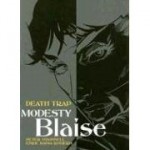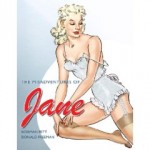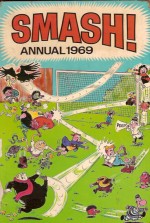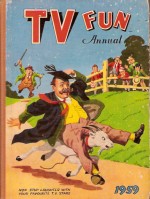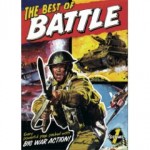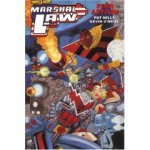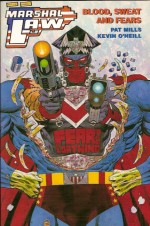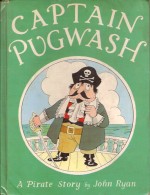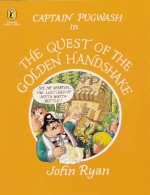
By various, edited by David Stuart Davies (Wordsworth Editions)
ISBN: 978-1-84022-170-1
Here’s a welcome blast from the past: a mainstay of magazines and children’s comics since the end of the 19th century and yet one who’s comics appearances are – as yet – comprehensively uncollected. So we’ll just have to make do with these selected prose adventures of the most prodigious and prolific crimebuster in British fiction: Sexton Blake.
Back in the days when even the shabbiest waif and ragamuffin could read, story periodicals for young and old ruled. Just as The Strand Magazine published the “last Sherlock Holmes story” ‘The Adventure of the Final Problem’ in1893, (it nearly was: Conan Doyle held out against incredible pressure from fans, editors and bankers until 1901 when ‘The Hound of the Baskervilles’ began serialisation) another British criminologist was beginning his even more spectacular – if less well celebrated career.
Sexton Blake was created by freelance journalist Harry Blyth, writing as Hal Meredeth, for the powerful Populist – if cut-rate – publisher Alfred Harmsworth, whose monolithic Amalgamated Press would eventually grow and swallow most other British publishers becoming today’s colossus IPC. In the same Christmas week that Holmes bowed out in the Strand a new star (if only “in the making” at this stage) strode in, solving the mystery of ‘The Missing Millionaire’ in The Halfpenny Marvel (#6, 20th December, 1893). It was a frankly inauspicious start, and Meredeth’s lacklustre prose and dull plots won no fans. He was replaced after his seventh script and other hands took over.
The detective moved to Union Jack in 1902 with that story-paper’s second issue, but Blake still had no true character or individuality even though the pace and logic of the adventures improved. He soldiered on as a workhorse property with scripts by William de Montmorency, William Shaw Rae, Percy Bishop and Alec Pearson, but the first real improvement came in 1904 when W.J. Lomax invented the role of Boy Sidekick by introducing cockney sparrow and indefatigable problem-solver Tinker, a young feisty street orphan with the heart of a lion. Tinker first met and assisted “The Guv’nor” in ‘Cunning Against Skill’ (Union Jack #53) and became both lab assistant and archivist for the great man.
Even though securely ensconced in the Union Jack story paper (large but flimsy pamphlets brightly coloured with lots of prose and a few illustrations: comics without strips), he could often be found in other Amalgamated titles such as Boys’ Friend Weekly (from 1905) with much longer tales; often upwards of 60,000 words as well as Penny Pictorial from 1907-1913.
In 1915 The Sexton Blake Library began, running for five volumes until 1968. The first issue, dated 20th September, ‘The Yellow Tiger’ by G.H. Teed introduced Wu Ling and Baron de Beauremon, initiating a classic period of incredible confrontations with literary super-baddies that would shape the aesthetics of criminal masterminds from Bond Villains to Lex Luthor.
Blake also got a new home in 1905 (Baker Street no less!) and an imposing landlady/cook, Mrs. Bardell. To perfect the formula in that same year he also acquired Pedro, the world’s smartest Bloodhound (‘The Dog Detective’ Union Jack #100, 9th September 1905). Another of Blake’s groundbreaking and much copied innovations was his penchant for labeled gadgets. He had both a cool car – a bullet-proof Rolls-Royce named the Grey Panther – and even a similarly themed customised Moth monoplane. Union Jack evolved into the racier Detective Weekly in 1933, with Blake as cover star and only World War II’s paper shortages stopped him – if only temporarily.
Continuously published from December 1893 to the end of 1978, more than 4,000 complete stories have been written by over 200 different authors – and that just the prose material.
A global sensation, translated into numerous languages throughout the Empire and the World, with several stage plays (from 1907), 20 silent movies (1909-1928) plus three “talkies”, vast amounts of toys and merchandise, a radio show on the BBC (from January 1939 to 1940), another in 1967 on Radio 4, and (although played too much for laughs for my taste) more in 2006 and again this year (the collected audio-book is scheduled for release on September 10th so will probably be out by the time you read this). A successful TV series ran from 1967-1971, with its own tie-in comic strip, one of many over the years, beginning with a prominent cartoon feature in the legendary Knockout Comic, beginning with issue #1 (4th March, 1939). Comic strips starring the unstoppable Blake appeared in The Knock-Out through its many amalgamations such as Knock-Out Comic & Magnet and, to finally, just plain Knockout from 1939 to 1960.
Written by Edward Holmes and illustrated by Jos Walker, successive artists included Alfred Taylor, Eric Parker (who painted most of the superb Sexton Blake Library covers and indeed the cover of this very book as seen at the top of this review), Robert MacGillivray, Reginald Heade, Frank Plashley, Graham Coton, George Parlett, and William Bryce Hamilton. Modern writers, although not necessarily of the strip, include John Creasy, Jack Trevor Story and Michael Moorcock.
From there Blake and his team appeared in Valiant, (1968-70, and tying-in to the TV series) and, more-or-less, Tornado. A seven-part adventure was drawn up but inexplicably retitled and re-lettered as Victor Drago.
Sexton Blake is a thinker, but he’s also a man of constant, instant action. His reasoning skills and intuitive manner, his “have-a-go” nature and world girdling exploits have made him the earliest and greatest epitome of crime-busting Renaissance Man.
The Casebook of Sexton Blake is a hefty but remarkably inexpensive tome gathering some of the very best exploits of the archetypical “Brains and Brawn” hero. Often described as “the poor man’s Sherlock Holmes” – most notably by Professor Jeffrey Richards on the BBC in ‘The Radio Detectives’ in 2003 – in fact he almost immediately grew beyond those commercial expedient origins to become so very much his own man.
This initial volume reprints some of the very best tales from the Golden Age of Sexton Blake beginning with The Slave Market! by Cecil Hayter (1907) which finds the detective and Tinker in darkest Africa rescuing an old friend in tumultuous Allen Quartemain Style, This is followed by the delightfully whimsical A Football Mystery (by W.J. Lomax, 1907). Blake and Tinker play for England and invent training shoes almost as an afterthought.
The Man from Scotland Yard by (Ernest Sempill writing as Michael Storm, 1908) tells the tale of a bent copper and introduces the hero’s greatest super-foe George Marden Plummer, whilst The Law of the Sea (1912) mirrors the incredible saga of the Titanic in a dynamic tale released within months of the event. Perhaps it was the result of swift opportunism, but it appears that writer William Murray Graydon may have anticipated the tragedy in his plot!
The Brotherhood of the Yellow Beetle by G.H. Teed (1913) is Blake’s own version of the prevalent “Yellow Peril” fad, introducing Oriental Mastermind Wu Ling whilst Robert Murray Graydon followed in his dad’s authorial footsteps with A Case of Arson (1917), a brilliant mystery pitting the team against the Raffles-like super-thief Dirk Dolland the Bat!
The book concludes with the unforgettable revenge-thriller The Black Eagle (by G.H. Teed, 1923) inspired by the cause celebré Dreyfus-Affaire wherein a man wrongly sent to Devil’s Island escapes to seek revenge on those who wronged him…
These are classic adventures from an age where people held different views on race, class, religion and just about everything. To that extent (and I’m not sure I’m particularly comfortable with the decision) certain words have been amended to conform with contemporary sensibilities.
Nonetheless, as a society we’re not at a stage yet where a sticker saying “Warning! Not Written Recently! Contains views WE don’t actually hold, believe, endorse or condone!” is enough to forestall controversy, so if old prejudices can still tick you off, maybe you should skip this chance to enjoy some rousing, rip-roaring fun and thrills. It’s your call…
© 2009 Wordsworth Editions, Limited. All Rights Reserved.
